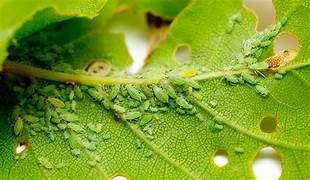How to Grow Bush Beans: A Complete Guide
Bush beans are one of the most rewarding vegetables for home gardeners. They're productive, relatively easy to grow, and don't require trellising like pole beans. This guide covers everything you need to know to successfully grow bush beans in your garden.
Getting Started: Seed Selection
Choose high-quality bush bean seeds from reputable suppliers. Popular varieties include:
- Blue Lake 274
- Provider
- Roma II
- Dragon Tongue
- Royal Burgundy
Planting Requirements
Timing
- Plant bush beans after all danger of frost has passed
- Soil temperature should be at least 60°F (16°C), preferably 70-80°F (21-27°C) for optimal germination
- For continuous harvests, sow new seeds every 2-3 weeks until mid-summer
Light Requirements
- Full sun (6-8 hours of direct sunlight daily)
- Will tolerate partial shade but with reduced yields
Temperature Preference
- Optimal growing temperature: 65-85°F (18-29°C)
- Seeds may rot in cold, wet soil
- Growth slows significantly below 60°F (16°C)
- Blossoms may drop in extreme heat (above 90°F/32°C)
Spacing
- Plant seeds 1-1.5 inches deep
- Space seeds 2-4 inches apart in rows
- Allow 18-24 inches between rows
- For square foot gardening, plant 9 bush bean plants per square foot
Germination
- Days to germination: 7-10 days in warm soil
- Can take up to 14 days in cooler conditions
- Seedlings emerge faster in warmer soil
Soil Requirements
- Well-draining, loamy soil
- pH between 6.0-7.0 (slightly acidic to neutral)
- Add compost before planting to improve soil structure
- Avoid over-fertilizing with nitrogen, which promotes foliage at the expense of pod production
Watering Needs
- Keep soil consistently moist but not waterlogged
- Water deeply once or twice weekly (1-1.5 inches of water)
- Avoid overhead watering, especially when plants are flowering
- Use mulch to retain moisture and suppress weeds
Common Problems and Solutions
Pests
- Bean beetles: Handpick or use row covers
- Aphids: Spray with insecticidal soap or neem oil
- Cutworms: Place collar around seedlings
Diseases
- Powdery mildew: Ensure good air circulation
- Bacterial blight: Rotate crops, avoid working in wet garden
- Root rot: Improve drainage, avoid overwatering
Harvesting
- Begin harvesting when pods are firm and crisp, usually 50-60 days after planting
- Harvest frequently to encourage production
- Pick beans when they're young and tender, before seeds inside become too large
- Hold the stem with one hand while picking with the other to avoid damaging plants
Companion Planting
- Good companions: carrots, cucumbers, corn, strawberries, and radishes
- Bad companions: onions, garlic, and members of the brassica family
Final Tips
- Avoid working around bean plants when they're wet to prevent spreading disease
- Consider inoculating seeds with rhizobia bacteria for improved nitrogen fixation
- Save seeds from open-pollinated varieties for next year's planting
With proper care, bush beans can be one of the most productive vegetables in your garden, providing delicious harvests throughout the growing season.







.jpg)



No comments:
Post a Comment